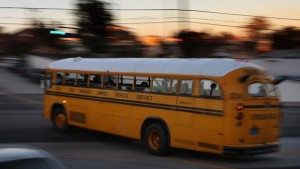For example, in 2010 the West Contra Costa Unified School District in Richmond issued bonds worth $2,499,949. Over the course of 26.1 years, the district will have to pay $33,820,000. That’s an amount 13.5 times more than what the district borrowed.
Among the other Bay Area districts with debt ratios of 10 to 1 or more are Acalanes Union High School in Lafayette (10.0 to 1), John Swett Unified School District in Rodeo (11.3 to 1) and Bellevue Union Elementary School District in Santa Rosa (10.8 to 1).
We called these districts to find out how they decided to issue bonds under these terms; so far only Paul Disario, a fiscal advisor to John Swett Unified School District, has agreed to an interview. Disario said he wasn’t advising the district in 2009 when it issued a bond for $266,175 that will cost property owners $3,020,000 over 24.9 years. But he cites a district bond for $19,583 at a cost of $140,000 (a ratio of 7.1 to 1) as an example of why the district would enter into a high debt-ratio deal. To pay the cost of refurbishing a high school, he said, voters in the district approved a property tax in 2008, but when real estate prices in the district crashed, the money wasn’t enough to pay for the repairs. In order to come up with the additional money needed, the district used the CAB, which allowed it to borrow all the money immediately because it had a longer term to pay back the interest.
“If you can’t get the money quickly enough, the project would be delayed and the cost of the project would go up,” said Disario. “So the advantage of the CAB would be that you can get the money sooner so you don’t have to delay the project.”
The school district will have no trouble paying back the bond as long as property values don’t drop again, Disario said.
He said capital appreciation bonds caught on after 1978, when Proposition 13 made it much harder for districts to raise money through property taxes. In 2000, Proposition 39 amended Proposition 13, lowering the threshold for school districts to raise property taxes to pay for construction projects from a two-thirds majority to 55 percent. But Proposition 39 set a limit of $60 in taxes per $100,000 of assessed value, limiting the amount school districts could raise. When property values dropped after the real estate crash of 2008, districts had to rely more on capital appreciation bonds to stay within the $60 per year limit that property owners had to pay. “You try not to do it,” said Disario. “You really don’t want to do it. But these districts are caught between the pressure to do these projects and the CABs.”
The LA Times talked to other school districts that also said state limits on taxation have left them with few good funding options.
Poway Supt. John P. Collins said the bond deal was one of the only options the district had. Property taxes are limited by voter-approved state laws, which cap the amount districts can levy on landowners. In addition, the Legislature cannot raise taxes without a two-thirds majority and state education funding has been cut because of the economic downturn.
"How does the state expect school districts to fund facilities given all the restraints today?" Collins said. "Capital appreciation bonds are a necessary tool right now."
The Times also talked to one county treasurer who thought hopes by school officials that rising property values would help them repay the bonds may be "overly optimistic."
"The projections can be unrealistic, especially for assessed valuations," said San Bernardino County Treasurer-Tax Collector Larry Walker, noting that the Fontana school system issued CABs at the bottom of the Great Recession.
"They said we'd be back to normal in three years," Walker said. "Property values were down then and it's clear they are not going to come back in any short time period."
State Treasurer Lockyer argues that school districts should go back to voters and ask for additional bonds if they don’t have enough money to pay for the construction they need. Still, he does not want to see CABs made illegal.
“I don’t think it would make sense to outlaw it,” Lockyer said. “One of the reasons is that local districts are running into some of the statutory limits of there can only be $60 per $100,000 of assessed value and so on, and so there probably needs to be some discussion of how projects are financed, and if there are obstacles like that perhaps try to get around them by changing the law.”
He added financial advisers to school districts should be licensed. “There is no effective oversight over what they do and whether they are providing competent service to their clients,” he said.
Lockyer and some county treasurers have called for legislation requiring more transparency around the true cost of the bonds and more oversight surrounding their issuance.
